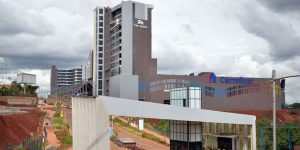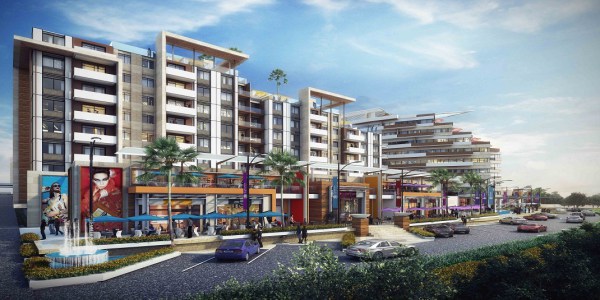Real estate is a growing industry in East Africa, owing to the fact that demand and supply push and pull of decent housing in urban areas is changing with the dynamics of population, economic development and investor projects. Most entrepreneurs have had a better analysis of their projects from market research and trends. However, it is evident that a good number of investors never get to visualize a full cycle of an infrastructure project and one minor consideration that is well known by professional in construction may land the whole project in turmoil. This has been the case in some real estate development project. Only a full cycle visualization will give a secure way to seal minor loopholes to threats of a real estate project.

Almost everyone’s wish is to have a decent housing, a decent home or both. For investors in the real estate industry, they target to construct sustainable standard housing that meet the needs of the target market and considers the safety of anyone who will dwell in or use the housing. According to the National Housing Corporation, Kenya has a deficit of 2 million households which annually grows by 200,000. The Ministry of Housing estimates the supply of households at 50,000 units per year which is far much lower that the demand and deficit. This is why housing infrastructure is key and should focus on sustainable economically to benefit investors and tenants. In this piece, we are going to focus in three key factors that individuals and company must factor in fully while planning to implement an infrastructure project for real estate. Some of these factors never get considered by local investors in a full cycle because they may not be well visualized in the initial planning for building and construction.
Sustainability of future business prospects
According to the Forbes Real Estate Council, addition of transportation system and increasing of rent charges are two key factors that indicate that development is improving in an area. These two factors means people are moving into an area at a high rate, hence creating a demand and supply tension which result into more infrastructure projects to cover for housing, shopping centers and malls and social amenities.
Despite all these luring factors that attract many investors into initiating infrastructural development projects in an area, but in some instances, even after doing a proper market research, the vision of sustainability to a future business might be diverted by critical dynamic factors that may not show up anywhere at the initial stages. According to a report by Credit Suisse, a Switzerland financial advisory company that was released in the last quarter of 2017, one out of four shopping malls in America would not exist in the next five years because of the crazy growth of digital sales. The report highlights that the digital sales of apparels will grow by 17% by 2030 and this means closures of more shops in malls. Credit Suisse approximated that 8,640 stores would be closed in 2017 due to the new niche n digital sales and shopping that was growing day by day.
This might be a similar case in East African countries, not necessarily this year but probably by 2025, owing to the growth of digital marketing, online sales and freelance businesses. This is also worsened by unstable market and economic times that the region is currently facing, especially in the rise of commodity prices, prolonged drought and political environment, mostly affected by the prolonged electioneering period in Kenya. The sustainability of business in any infrastructural development beyond ordinary factors must be focused on to analyze full potential of an infrastructure business.
Maintenance policy
Any real estate property needs proper maintenance policy to ensure that it maintains its standard and value. Most people have witnessed houses, offices, apartments and residential estates with poor drainage, leaking roofs, blocked sewerage lines and dry taps. Maintenance policy applies to roads and bridges in a real estate construction area. With time, these factor diminish the value of a property and lead to tenants moving out of the houses or apartments. Some real estate investors are then forced to lie to tenants on the status of the house or office, but it is realistic that no one is always ready to spend money on something that does not give them value. This is the case where you find unoccupied apartments, just because of some failures that would have been avoided if a maintenance policy would be in existence and effective.
Projected physical, environmental manmade effects to properties
2016 and 2017 (except the first quarter of the years) witnessed heavy rains that turned most of the admired flats along Nairobi highways into swimming pools. Residents of some of these houses, especially those living on the ground floors lost almost all properties in their houses. Almost all residents of such apartment who had no luck but incur unplanned budget in servicing, reselling and seeking insurance compensations after their cars were soaked in rain waters that flooded their parking areas.
There are two sides of the coin in weighing this occurrences. It is obvious that one of the initial planners, architects, surveyors and contractors ignored major procedures of construction such as surveying and architecture. There are local governing authorities that must authorize the construction of any building in the area within their mandate. If a building is illegally constructed after breaching a standard regulation, it means corruption has taken its way, but when tenants move out of an apartment because of frequent and risky flooding, the owner of the property has all the losses to take. Woo to the investor if a good number of tenants leave when he or she had solely banked on the rent from them to pay a loan he took to construct the same house. This is where insurance would help, but mostly if standard procedures during the surveying and construction were followed. The best standard beyond the ordinary procedures here is to avoid any irregularity in real estate development because it might negatively affect an investment in the long run.
Fake building and construction professionals
This is one of the major challenges that urban developments are facing. Most of the storey buildings in residential areas, especially in the Eastland area of Nairobi have been collapsing. Some findings from the authority were the architecture that designed a specific building together with giving architectural expertise in the construction in a fake professional and in Kenya’s case is not registered with the Board of Registration of Architects and Quantity Surveyors (BORAQS). If an investor did not check the registration status of the architects, quantity surveyors together with relevant firms working for him or her, then it is a loss that the investor will carry for ruining his or her investment. Most times, working with fake professionals happens because of intention to evade high contract costs from professional individuals, when the projects have not be legally authorized by local authorities and when the land intended to host the infrastructural projects has not met legal requirements for the construction to go on.
There are rampant cases of this nature that affects investors in cities and largely affect local citizens across East African countries who have no idea on who is who and how who is who professionally. In case of unfortunate incidences like collapsing of houses that cause deaths like the ones we have recently witnessed in Huruma and Kariobangi areas of Nairobi, the investor together with all the key players in the construction of the building will have the wrath of the law if at all any lapses from their roles caused the accident. As an investor, if you hired a fake professional to work for you as an architecture, then you may be the only constant man standing at the docks of courts together with your other partners who will be accomplices in the cases. This means more wasted resources to battle cases in court. If these factors would be considered in a full cycle beyond the standard procedures, then more loss to a flawed construction investment would not take place.
That aside, technical audits which are done by quantity surveyors are key in all the stages of construction. This is one solution that can help avoid any lapses in construction project that may lead to losses such as collapsing of story building, water percolating from underground and external infrastructural projects affecting a house or an apartment. The chairman of the Institute of Quality Surveyors in Kenya (IQSK) Andrew Wandere believes that technical audits are the buttons to successful infrastructural projects, saying quantity surveyors are not efficiently used in construction projects.
“In the recent times, only engineers are engaged I infrastructural projects. He/she designs, documents, does valuation, does final accounts and so on. As a result, there are no checks and balances in infrastructural development projects as there are in buildings. It is quantity surveyors who bring those balances.
“The audits should be over and above financial audits. We as surveyors propose that a small allowance be included in the contracts to cover the costs of technical audits as this would ease budgetary constraints.” Wandere said.
The above mentioned illustrations are some of the major lapses that are never taken into full cycle considerations in construction investments. In government policies/guideline, economy demographics, interest rates and all other key factors that affect real estate investments, not viewing any of these factors in a full cycle will lead to losses that would have been easily avoided and unsustainable venture, hence killing a real estate entrepreneur.
Entrepreneurship is taking the next visualized risk, but taking it with sound, resound and informed mind is the risk that everyone must focus on, especially in real estate business.

